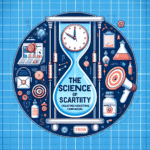
Addiction and the Brain: The Psychological Battles Behind Dependency – Your Ultimate Guide to Understanding Dependency
Introduction: The Battle Within
Imagine for a moment that your brain is a delicate balance scale. On one side, you have pleasure, reward, and the thrill of escape that substances can provide. On the other side, you have rationality, responsibility, and the weight of consequences. What happens when that scale tips? This article will delve into Addiction and the Brain: The Psychological Battles Behind Dependency, exploring the intricate relationship between brain chemistry, psychological factors, and the relentless grip of dependency.
Addiction is not just a personal failure or a moral flaw; it’s a complex interplay of neurobiology and psychology. The stakes are incredibly high, impacting everything from individual health to community well-being. This article aims to enlighten you about this multifaceted issue, offering valuable insights to anyone who wishes to understand or overcome addiction.
The Neuroscience of Addiction: A Biological Foundation
Understanding the Brain’s Reward System
The brain’s reward system is at the core of understanding addiction. Neurotransmitters like dopamine play a significant role in how individuals experience pleasure. When someone indulges in substances—whether drugs, alcohol, or even compulsive behaviors like gambling—these neurotransmitters surge, creating a feeling of euphoria.
Table 1: Key Neurotransmitters Involved in Addiction
| Neurotransmitter | Role in Addiction | Effects |
|---|---|---|
| Dopamine | Signals pleasure and reward | Euphoria, reinforcement of behaviors |
| Serotonin | Regulates mood | Impacts emotional stability |
| Norepinephrine | Elevates alertness and arousal | Triggers fight-or-flight response |
| GABA | Inhibitory neurotransmitter | Reduces anxiety, promotes relaxation |
Case Study: The Dopamine High
Consider the case of Sarah, a 25-year-old who began using methamphetamines socially. Initially, Sarah felt invincible, as dopamine flooded her brain. However, within months, she noticed a decrease in her mood when not using the drug, demonstrating how quickly dependency can develop. This case illustrates how increased dopamine prompts individuals to seek out the pleasurable experience over and over.
The Brain’s Response to Dependency
Once addiction takes hold, the brain’s structure changes. Areas such as the amygdala and the prefrontal cortex begin to function differently. The amygdala, responsible for emotion regulation, can amplify cravings, while the prefrontal cortex, involved in decision-making, loses its efficacy, leading to poor judgment.
Case Study: The Impact of Chronic Use
John, a middle-aged man, consumed alcohol heavily for over a decade. His brain imaging results showed a diminished prefrontal cortex, resulting in impaired decision-making. Choices that could have altered his path—like seeking help—became increasingly difficult. John’s story highlights the brain’s adaptability, but also its vulnerability to addiction’s destructive cycle.
Psychological Factors: The Mind Behind Addiction
The Role of History and Environment
While biology plays a crucial role, psychological factors such as upbringing, trauma, and societal influences cannot be ignored. Many individuals battling addiction have histories of trauma or mental health disorders that can fuel their dependency.
Case Study: The Hidden Impact of Trauma
Emily grew up in a household marked by neglect and emotional abuse. As an adult, she turned to opioids to numb her emotional pain. Emily’s case exemplifies how unresolved trauma can manifest as addiction. When individuals do not process their experiences healthily, substances may be used as a mechanism for coping.
Cognitive Dissonance and Addictive Behavior
Cognitive dissonance, the mental discomfort experienced when holding contradictory beliefs, plays a significant role in addiction. Individuals may understand the negative consequences of their addiction yet continue the behavior, leading to a perpetual cycle of guilt and shame.
Table 2: Cognitive Dissonance in Addictive Behavior
| Cognitive Dissonance | Behavioral Consequences |
|---|---|
| Belief in the unhealthiness of the behavior | Continued use due to withdrawal symptoms. |
| Awareness of relationship strain | Insistence that social life is better with alcohol or drugs. |
The Process of Recovery: Navigating the Battlefield
Recognizing the Need for Help
Choosing to confront addiction is often the hardest step. Many are stuck in the psychological battles of denial and guilt. However, acknowledging the need can lead to meaningful change.
Case Study: From Crisis to Change
Tom, a 30-year-old veteran, hit rock bottom when he lost his job due to methamphetamine use. His turning point came when he recognized the disparity between his life goals and current behavior. The decision to seek help opened doors to recovery, demonstrating the importance of self-awareness.
Evidence-Based Treatment Approaches
Treatment plans often incorporate various approaches to address both mental health and substance use disorders, such as:
- Cognitive Behavioral Therapy (CBT): Helps individuals recognize and change unhealthy thought patterns.
- Motivational Interviewing (MI): Encourages individuals to find their motivation for change.
- Medication-Assisted Treatment (MAT): Combines medications with counseling and behavioral therapies.
Case Study: Effective Combining of Treatments
Lisa, a 27-year-old struggling with opioid addiction, entered a treatment program that included MAT alongside CBT. Over six months, she experienced significant changes—reducing use and developing coping strategies. Lisa’s journey underscores the effectiveness of a holistic approach, addressing both addiction and the brain’s psychological dimensions.
Preventative Measures: Making Positive Choices
Community and Environmental Influences
While individual choice is vital, community and environmental factors significantly influence the likelihood of addiction. Programs that promote healthy coping mechanisms can make a considerable impact.
Case Study: Community Success Story
A neighborhood in New Mexico launched a program focused on youth education about the dangers of drug use. Over three years, the area saw a 30% decrease in substance use among teenagers. This community-driven initiative highlighted the importance of providing support systems and information to deter addiction.
Awareness and Education
Awareness campaigns—whether through schools, workplaces, or media—can destigmatize addiction, encouraging individuals to seek help. Education about the Addiction and the Brain: The Psychological Battles Behind Dependency should be foundational in schools, emphasizing that addiction is a treatable condition, not a moral failing.
Conclusion: Embracing Change and Hope
Understanding Addiction and the Brain: The Psychological Battles Behind Dependency goes beyond mere facts; it’s about recognizing the profound challenges individuals face. The intertwining of brain chemistry and psychological battles reveals the complexity of addiction.
Recovery is not linear; it requires patience, support, and often multiple attempts. But hope exists! Each step taken—whether toward understanding, treatment, or community support—contributes to breaking the cycle.
An inspiring takeaway: You are not alone in this battle. Knowledge is power, and by educating ourselves, we arm our communities with the tools needed to combat addiction.
FAQs: Addressing Common Concerns
1. What is addiction?
Addiction is a complex condition characterized by compulsive substance use and an inability to stop despite harmful consequences. It affects both the brain and behavior.
2. How does addiction affect the brain?
Addiction alters brain chemistry, affecting neurotransmitters responsible for pleasure and decision-making, leading to compulsive behaviors and reduced impulse control.
3. What are the signs of addiction?
Signs may include increased tolerance, withdrawal symptoms, neglecting responsibilities, and continuing use despite adverse consequences.
4. Can addiction be treated?
Yes! Various treatment options exist, including therapy, support groups, and medication. Recovery is possible with the right support and resources.
5. How can communities help prevent addiction?
Communities can establish educational programs, promote healthy lifestyles, and provide resources for mental health support to help prevent addiction.
In this journey through Addiction and the Brain: The Psychological Battles Behind Dependency, we aimed to shed light on the complexities of addiction. Whether you are seeking answers for yourself or seeking to understand a loved one’s struggle, knowledge and empathy can pave the way toward healing and recovery.












